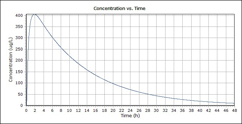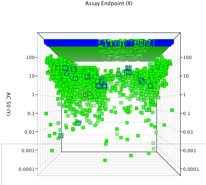


The Answer - Animal Testing As The Last Resort
FitOldDog's Toxicology Gedanken (Thought) Experiment

Rats As Our Poison Detection System? Another approach!
I decided to see if I could use new techologies to assess the risks of human exposure to a randomly chosen herbicide (9th of first Google list) - it turned out to be a cyclohexene oxime, Clethodim (shown, left).
I checked the existing Rat Oral LD50 data for other cyclohexene oxime herbicides - all over 2,000 mg/kg - EPA low risk category, then I checked the ToxCast database, and the three related herbicides present, sethoxydim, tepraloxydim, and tralkoxydim, were inactive in the 821 toxicity-related in vitro assays (see graph) - again indictating low toxicity potential
What shall I do next, I wonder? Test TEST?
ToxCast data visualized in DotMatics revealed no evidence of toxicity at the doses, and for the endpoints, tested.

How quickly is Clethodim absorbed, where does it go, what does it become, and what does it do there?
I was fortunate to have some assistance from a colleague, at AEgis Technologies, for initial PBPK modeling of compound; indicates rapid clearance.
Can I come up with a gedanken estimate of risk without using any animal testing? Unlikely, but I'll try!




